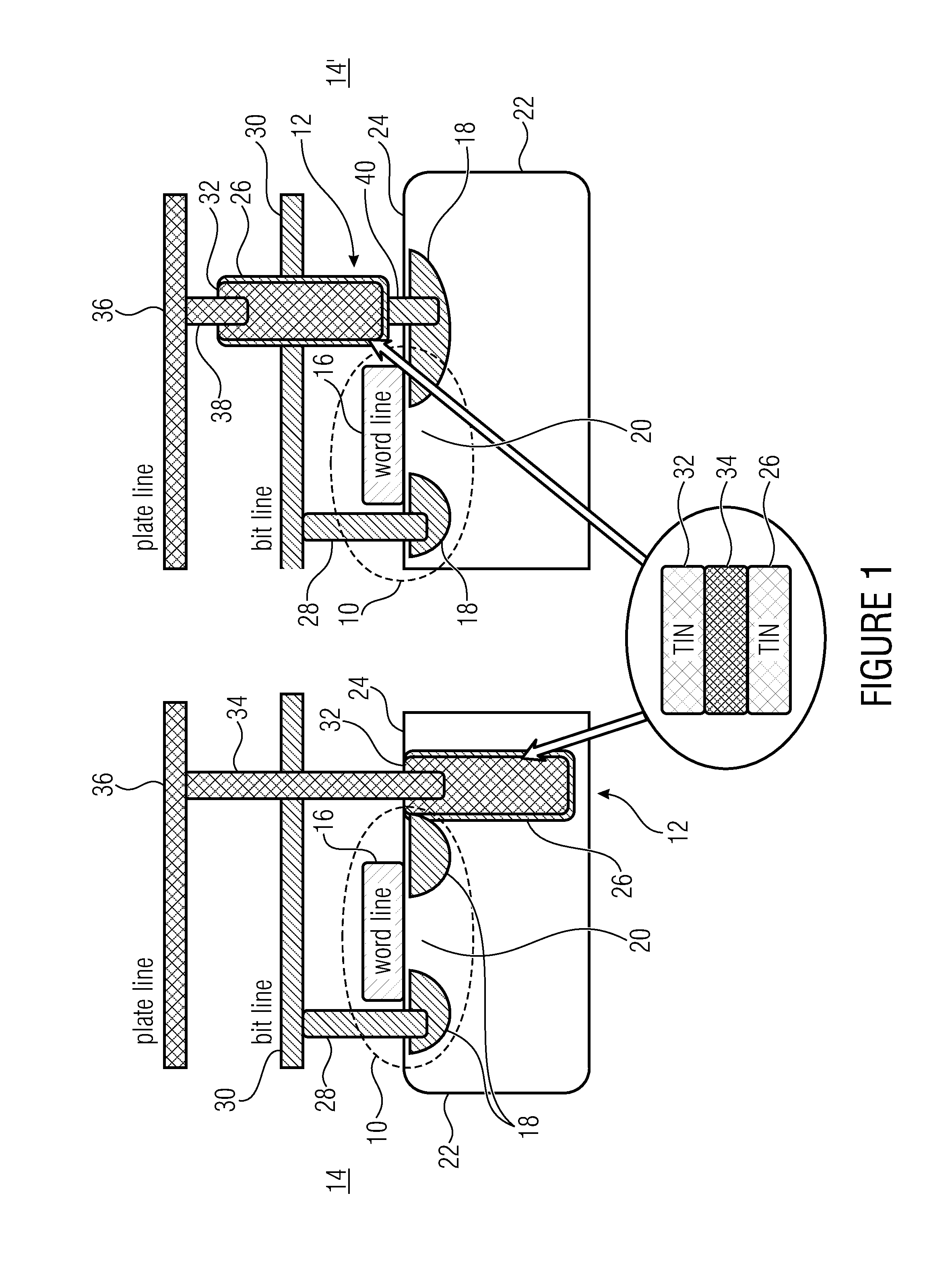Memory cell
a memory cell and cell technology, applied in the field of memory cells, can solve the problems of high speed and endurance, loss of memory state, and high cost, and achieve the effect of reducing the number of memory cells
- Summary
- Abstract
- Description
- Claims
- Application Information
AI Technical Summary
Benefits of technology
Problems solved by technology
Method used
Image
Examples
Embodiment Construction
[0033]Before embodiments of the present invention will be discussed below with reference to the figures, the idea leading to these subsequently described embodiments will be discussed exemplarily based on known memory technologies and skills, wherein these statements are not to be seen in a limiting sense with respect to the embodiments that will be described subsequently.
[0034]As the following discussion will show, the option of provoking ferroelectricity in some materials provides a possible, advantageously simple, starting point for providing a memory, such as a DRAM / FeRAM with a volatile and nonvolatile operating mode as well as without the necessity of adding NVM elements that are specifically intended for nonvolatile storage. Examples for materials that can be provided with the characteristic of ferroelectricity comprise hafnium and / or zirconium oxide (HfO2 / ZrO2) based systems. It is an advantage that these two exemplary materials, i.e. hafnium and / or zirconium oxide, are alre...
PUM
 Login to View More
Login to View More Abstract
Description
Claims
Application Information
 Login to View More
Login to View More - R&D
- Intellectual Property
- Life Sciences
- Materials
- Tech Scout
- Unparalleled Data Quality
- Higher Quality Content
- 60% Fewer Hallucinations
Browse by: Latest US Patents, China's latest patents, Technical Efficacy Thesaurus, Application Domain, Technology Topic, Popular Technical Reports.
© 2025 PatSnap. All rights reserved.Legal|Privacy policy|Modern Slavery Act Transparency Statement|Sitemap|About US| Contact US: help@patsnap.com



